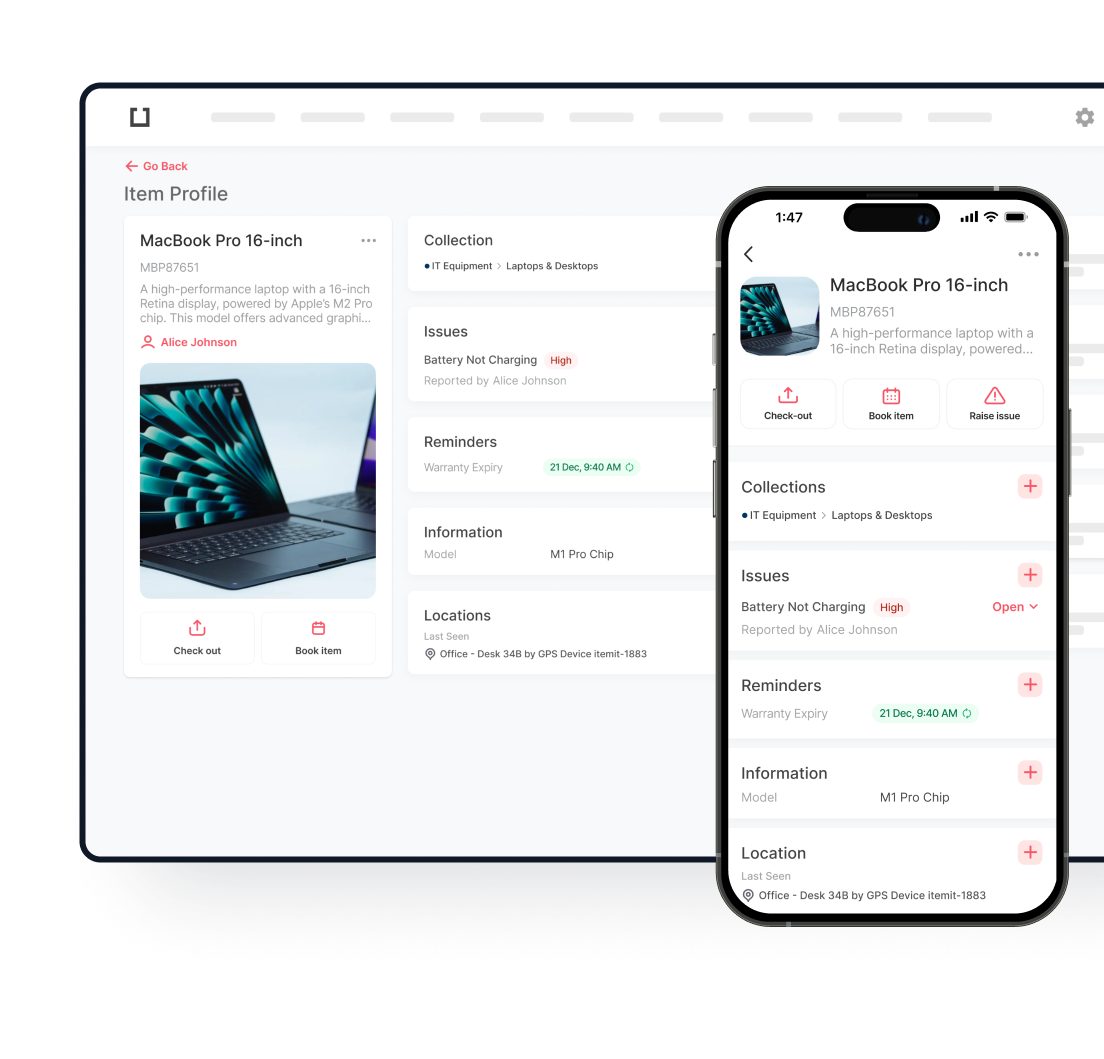
The competitive business environment requires maintaining accurate financial records. This is where asset tracking becomes crucial, ensuring that your assets are accurately accounted for and valued. Effective tracking solutions help identify impaired assets promptly, preventing financial discrepancies. This guide provides a comprehensive overview of tracking and managing asset impairment to safeguard your business’s financial health.
Understanding Asset Impairment
What is asset impairment? It is a significant and permanent decline in an asset’s value. It refers to both tangible and intangible assets. If not appropriately addressed, this decline can significantly affect business financial statements, leading to losses and wrong asset valuation. In this respect, early detection of asset impairment is crucial for maintaining the accuracy of all accounting records and ensuring the company’s economic stability.
Our guide provides a comprehensive resource for tracking and managing impaired assets. You will get valuable insights necessary for identifying, recording, and addressing the impairment of intangible assets. By following the best techniques and solutions, you will ensure effective asset impairment management that safeguards your company’s financial well-being.
Causes of Asset Impairment
There are various causes of fixed asset impairment. The most common ones are physical damage, obsolescence, and abrupt market changes. If an asset’s market value falls lower than its book value and isn’t likely to return, then this asset must be recorded as impaired. Knowing these causes helps businesses take precautions over their assets and prevent such substantial financial losses in advance.
Equipment, vehicles, and property are examples of impaired assets. Fixed asset tracking uses different solutions, such as RFID asset tracking, GPS, specialised software, etc. These techniques are essential for monitoring the status and value of such assets. A business can identify impairments and make proper adjustments to its accounting records.
Importance of Prompt Identification
Prompt identification of asset impairment is essential to maintaining accurate financial records and preventing significant financial losses. Regular asset audits help businesses detect signs of asset decline quickly and take necessary action.
- Prevent substantial impairment loss, ensuring the business does not face unexpected financial setbacks.
- Maintain accurate asset valuations, which is crucial for clear and truthful financial statements.
- Ensure timely financial reporting compliance, helping the business adhere to accounting standards and regulations.

How to Track Asset Management for Impaired Assets
Management of impaired assets involves regular assessments and leveraging technology to monitor their condition and value. This comprehensive approach helps businesses maintain the integrity of their financial records. Here are some key methods to ensure effective asset management.
Regular Inspections and Audits
Fixed asset audits should be conducted regularly to determine any possible impairments. Such an audit intends to analyse the assets’ current condition and whether their value has undergone any significant decrease. Inspecting those assets allows you to indicate wear, damage, or even obsolescence.
A thorough digital assets audit is also important. The process involves assessing the condition and value of an intangible asset, including software and intellectual property. Regular audits will help in appropriate valuation and prevent financial discrepancies.
Monitoring Usage Patterns and Maintenance Records
Tracking the usage patterns of fixed assets provides insights into their performance and condition. By monitoring usage and maintenance records, businesses can predict potential impairments and take preventive measures. This proactive approach ensures assets remain functional and valuable.
For digital assets, keeping detailed usage logs and performance records is vital. These records help identify any decline in functionality or value, enabling timely interventions. Regular updates and maintenance ensure digital assets perform at an optimal level.
Using Technology to Monitor Asset Condition and Location
Implementing advanced tracking systems enhances the monitoring of asset conditions. These systems provide real-time data regarding location and status, making the identification of impairments easier. Automated alerts ensure that issues are addressed promptly.
Digital assets benefit from sophisticated tracking technologies as well. Asset tracking software monitors the performance and value of intangible assets, providing detailed reports and analytics. This technology helps businesses maintain accurate valuations and manage their digital portfolio efficiently.

RFID vs GPS Asset Tracking Methods
Modern businesses should use and combine various asset management methods to ensure accurate tracking and valuation of their assets. Effective asset monitoring techniques play a critical role in maintaining the integrity of asset data and recordings. By understanding all available methods, you can choose the most suitable tracking solutions for your needs.
Traditional and Manual Tracking
Spreadsheets offer a simple and cost-effective way to manage assets, allowing for manual data input and organisation. However, this method can lead to errors and time-consuming updates, especially as the number of assets grows.
Manual tracking, like physical logs and regular check-ins, is straightforward but becomes impractical with a more extensive inventory. It lacks real-time updates, making it harder to identify and address impairments promptly.
Modern Asset Management Solutions
Modern asset management solutions leverage advanced technology to provide efficient and accurate asset tracking. For instance, asset management software, RFID, and GPS tracking devices provide real-time data to smooth processes. Implementing these solutions can significantly enhance asset monitoring and management.
Key benefits of modern asset management solutions:
- Real-time tracking: Provides up-to-date information about asset location and condition.
- Reduced errors: Minimises manual input, reducing the risk of mistakes.
- Efficiency: Automates tracking processes, saving time and resources.
- Data analytics: Offers detailed reports and insights for better decision-making.
- Scalability: Easily adapts to growing asset inventories without losing efficiency.

Asset Management Software and ERP Systems
Asset management software and enterprise resource planning systems are designed to integrate various functions, from inventory management and scheduling maintenance to financial reporting. This facilitates the centralisation of asset data onto one platform, making this information easily accessible and up-to-date.
Using such systems improves efficiency and accuracy in asset management. They offer features such as automated maintenance alerts, real-time asset monitoring, and detailed analytics that aid in making correct decisions. Businesses can use these technologies to optimise an asset’s use, reducing the chances of downtime and maintaining record books for financial accuracy.
RFID and GPS Tracking Devices
RFID tracking uses radio frequency identification to monitor assets. RFID tags are attached to assets, allowing for automatic identification and data capture through radio waves. This technology is highly effective for tracking large inventories and provides real-time updates on asset locations and conditions.
GPS tracking uses satellite signals to pinpoint the precise location of assets. It is especially useful for mobile assets, such as vehicles and equipment, offering real-time location data. GPS tracking ensures that businesses can monitor their assets’ movements and manage logistics efficiently.
Other Innovative Solutions
Besides RFID and GPS, several other innovative solutions improve asset management. Technologies like IoT sensors, blockchain for secure asset transactions, and AI-driven predictive analytics are transforming the way companies manage their assets. Advanced tools give insights, accuracy, and the possibility of proactive management that guarantees efficient utilisation and optimal maintenance of the assets.
Reaching an Effective Asset Management
Tracking and managing impaired assets is critical to any business’s financial health and operational efficiency. Early identification and proper management of asset impairments help avoid major financial losses and maintain reliable financial reports. Advanced tracking technologies and comprehensive management solutions can significantly enhance these efforts.
A proactive approach to asset management is essential for long-term success and growth. Regular audits, real-time monitoring, and the use of innovative tracking methods help maintain assets’ value and functionality. Ultimately, a well-managed asset portfolio supports better decision-making and promotes overall business stability.

Try itemit
Choose a better way to track
your assets.
Start your free 14-day trial now!

Keep Learning
itemit Blog
Tips, guides, industry best practices, and news.
Top Benefits of Using Inventory Management for Bakeries
[lwp_divi_breadcrumbs font_icon="5||divi||400"...
How Asset Tracking Systems Transform Hospital Management
[lwp_divi_breadcrumbs font_icon="5||divi||400"...
How To Save Money On Computer Maintenance
Want to save money on computer maintenance? Read this post right now to find out how IT asset tracking software can help!



